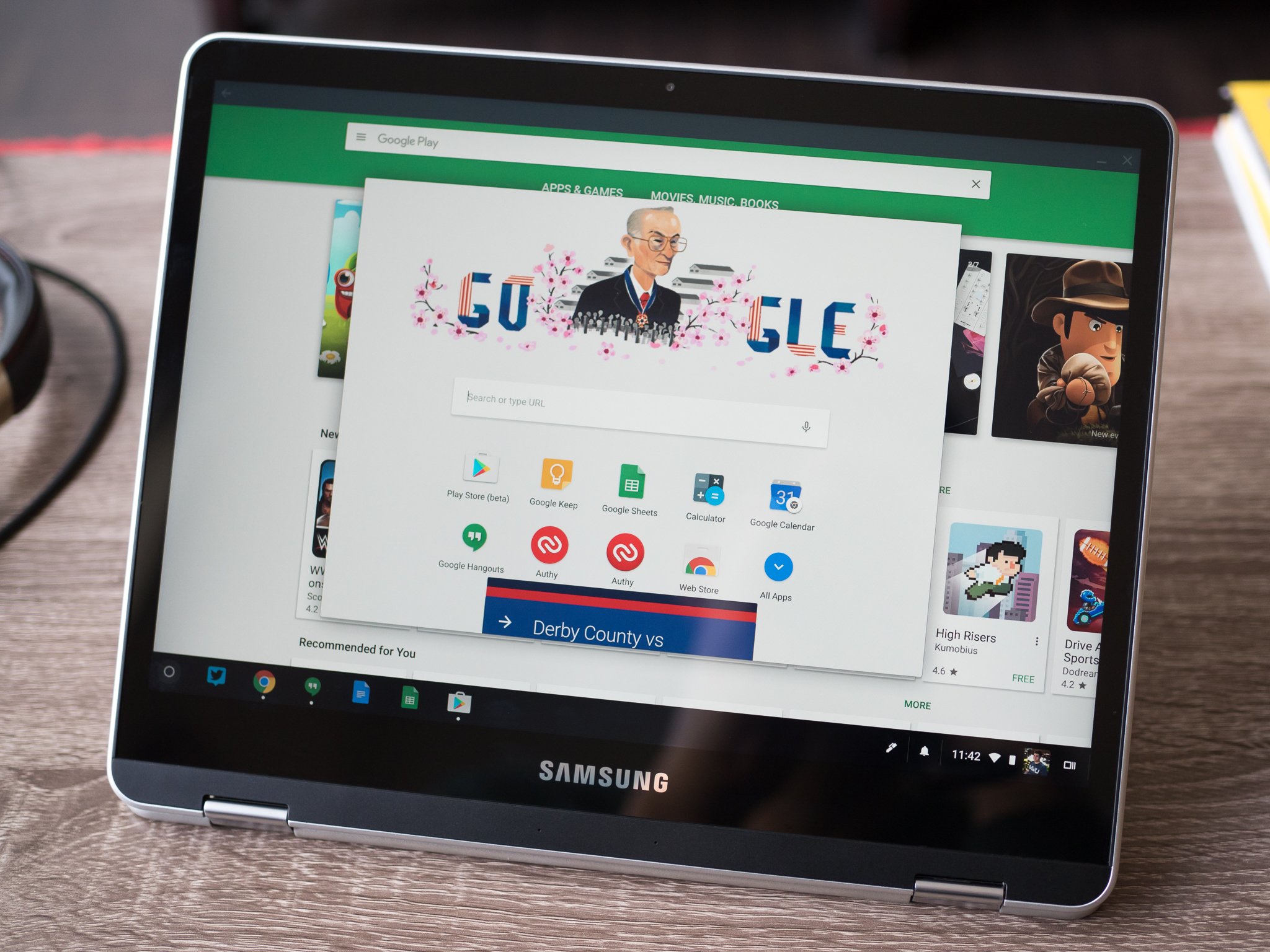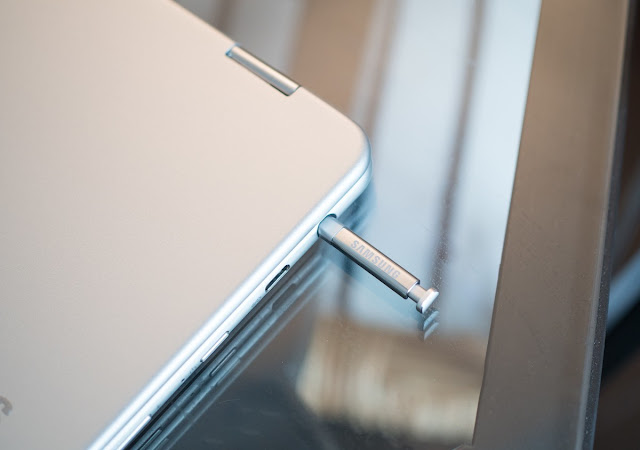Samsung Chromebook Plus vs. Pro: The differences, and which should you buy?
Samsung’s 2017 Chromebook lineup offers something for everyone with two equally great models.
Samsung introduced a pair of great Chromebooks with the unveiling of the Pro and the Plus. In addition of the Chrome OS features we’ve been using like built-in security and the best web browsing experience you can get anywhere, Samsung and Google have introduced pressure sensitive drawing using a familiar Samsung Pen. And everything is wrapped up in an awesome package no matter which model you choose.
Most of us won’t be buying both models, so the natural questions are what’s the difference between them and which one should I buy? We’re going to have a look and help you get the right answers.
Beautiful and light
That’s going to be your first thought no matter which model you are looking at. Both models are built the same using identical parts — on the outside.
The screen is the best we’ve seen on a Chromebook.
Checking in at just 0.5 inches thick and 2.38 pounds, these 12.3-inch laptops use the same Samsung design language as their high-end Windows counterparts. Built with a brushed magnesium-alloy body paired with a 2400 x 1600 LED display, both models are not only good looking, but sturdy and great for carrying all day long. We especially loved the bright and crisp display.
The keyboard and trackpad aren’t the best we’ve used but they’re not bad, either. The omission of backlighting was a bit disappointing, but in the end, we were more than satisfied with both keyboard and trackpad even if we couldn’t give either the level of praise we have for the screen or the materials used.
The screen rotates and flips to turn the Chromebook into a large tablet, and also allows for a “tent” or “easel” configuration to stand the screen without the keyboard area extending. This is a great way to watch a video or full-length film on the display.
The spotlight feature of both devices is Samsung’s S Pen. We’ll see stylus input in future Chromebooks, but Google partnering with Samsung to build the first models was the smart move. The Pen is the same S Pen you’ll find for Note phones and tablets, and Chrome has been tailored to make the stylus an excellent tool for annotating screenshots, taking notes and drawing. The Samsung Chromebook folded into a 12-inch tablet makes for a great canvas for any digital artist.
We give both models high marks on looks, durability, function, and ease of use. These are great laptops.
What’s inside
Here is where you’ll find the differences between the Plus and the Pro. Both come with the same 4GB of RAM and 32GB of storage configuration, but the processor arrangement and electronics for wireless radios define the price points.
| Category | Chromebook Pro | Chromebook Plus |
|---|---|---|
| Display | 12.3-inch 2400×1600 (3:2) LCD | 12.3-inch 2400×1600 (3:2) LCD |
| Processor | Intel Core m3-6y30 | Rockchip RK3399 ARM hexacore CPU |
| Memory | 4GB LPDDR3 | 4GB LPDDR3 |
| Storage | 32GB | 32GB |
| Audio/Video | 720p webcam Stereo 1.5W speakers |
720p webcam Stereo 1.5W speakers |
| Ports | USB-C (2), headphone/mic, microSD card | USB-C (2), headphone/mic, microSD card |
| Connectivity | Wi-Fi 802.11ac dual-band, Bluetooth 4.0 Accelerometer, gyroscope |
Wi-Fi 802.11ac dual-band, Bluetooth 4.0 Accelerometer, gyroscope |
| Input | Touch screen Pressure-sensitive stylus Keyboard, trackpad |
Touch screen Pressure-sensitive stylus Keyboard, trackpad |
| Battery | 39 Wh (5140 mAh) USB-C charging |
39 Wh (5140 mAh) USB-C charging |
| Dimensions | 280.8 x 221.6 x 13.9 mm 2.38 pounds |
280.8 x 221.6 x 13.9 mm 2.38 pounds |
With most things being equal between the two, the processor and extra horsepower that comes with the Pro is the only real hardware difference.
The Pro’s Intel CPU offers more power if you need more power. Most won’t.
On paper, it makes quite the difference. The Intel m3 in the Pro has the potential to render web pages twice as fast as the Plus’ ARM chip. You’ll find plenty of Octane browser benchmarks that show this in a convenient number. In real-world use, the Pro model will let you keep more browser tabs or apps running before things start to slow down. Benchmark differences in rendering web pages may be significant, but you have to factor in that the ARM CPU in the Plus model is plenty fast enough and you won’t see any actual difference when rendering a single web page or opening an app.
The Pro is clearly a more powerful machine on the hardware front, and we shouldn’t dismiss that. But the Plus offers a more than satisfactory experience for the majority of Chrome users.
Software differences

Both models have essentially the same software with Chrome OS being universal across most every Chromebook. The one difference may be a deciding factor — Android apps through the Google Play Store.
There will be Android apps that don’t perform as well on the Pro because of the CPU architecture.
The Play Store will be available for both models, and the majority of apps you can use on a Chromebook will work well on either. But the Intel processor that give the Pro an edge in hardware also holds it back a bit when it comes to app compatibility and user experience.
This is mostly a function of Android itself and not a fault of the hardware. A developer can build a universal application for Android that runs using the same instructions on most any processor architecture. That means an Android app is the same on any device. But certain apps that use specialized code will be less than ideal on the Intel chip. Most notable are graphic intensive apps and games, and while most will install they just don’t run as well. Great developers will step in and rectify this by supporting the Intel CPU better, but Google Play’s relaxed nature means developers aren’t forced to do so.
Which should I buy?
Sometimes this is a difficult question to answer, but this is not one of those times. Most people are better served with the Chromebook Plus.
Most buyers are better served with the Chromebook Plus.
A Chromebook is best as a secure and fast computer built to bridge the gap between your phone and a desktop PC. Mobile apps through Google play round out the software needs and for all but the most demanding users, the $100 difference between the two isn’t worth the upgrade. If you rely on Android applications, right now the faster Intel chip is actually a weakness compared to the tried and true ARM configuration in the Plus.
For the power user: web developers or those looking for an alternative OS for their Chromebook, the Pro was made for you. The extra oomph from the Intel m3 CPU will make a difference and the Chromebook Pro is an excellent machine for developing and testing web applications. The extra money is well spent and you’ll have a more pleasant experience when you’re in the zone with 25 tabs and a text editor open.
It’s great to see two simple and great choices from Samsung in the high end, and anyone’s needs are well covered.
Note: The Chromebook Pro has been delayed past its initial release date of the end of April. We will update this post when we have links to purchase the laptop.
Discover more from Applygist Tech News
Subscribe to get the latest posts sent to your email.



